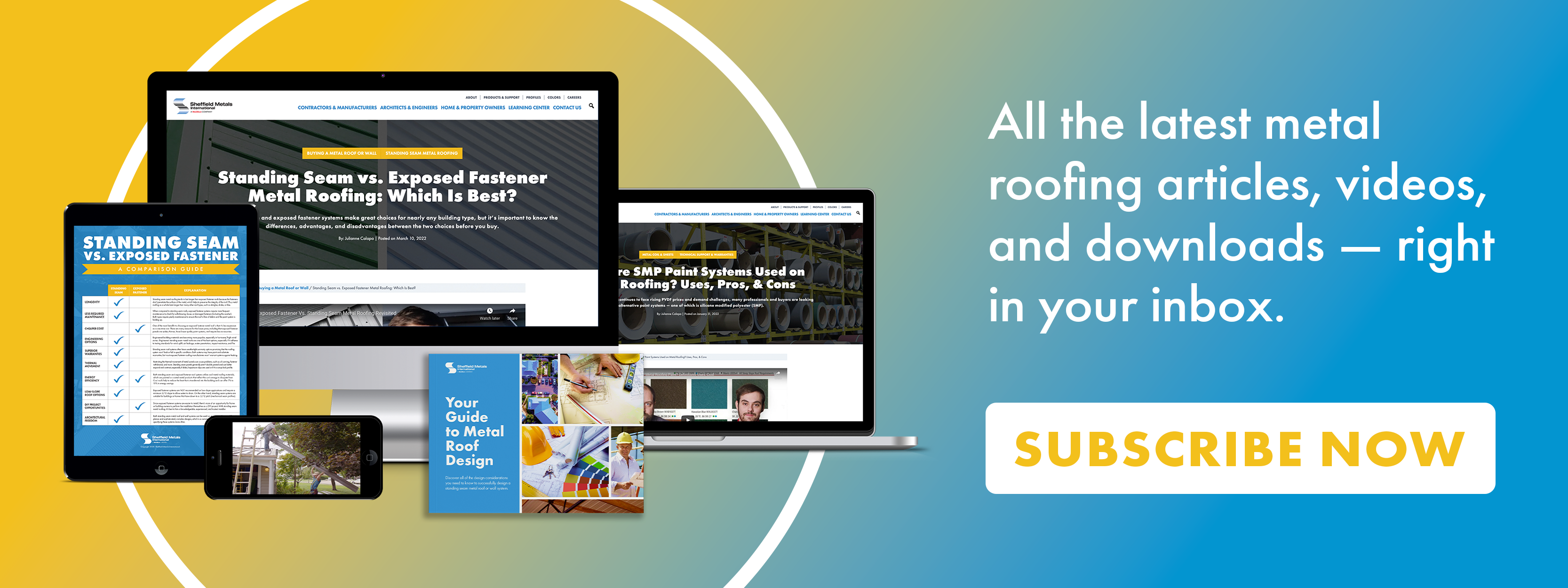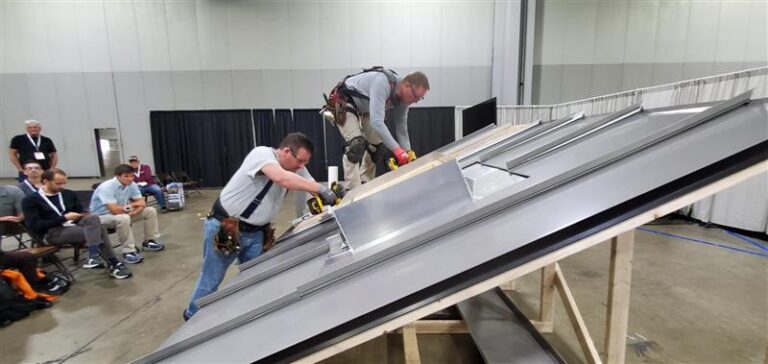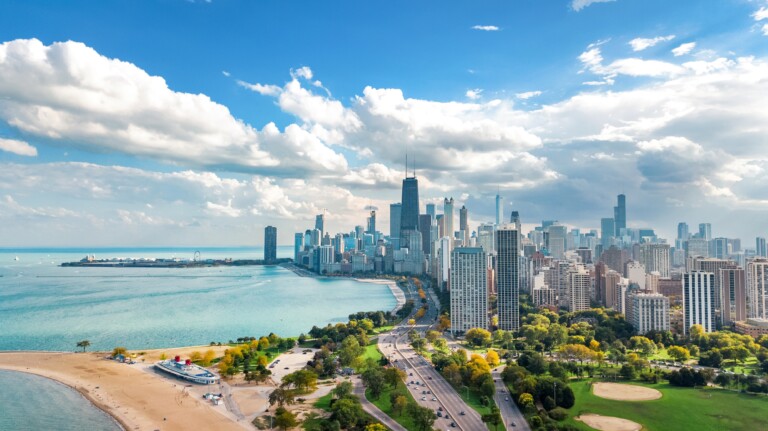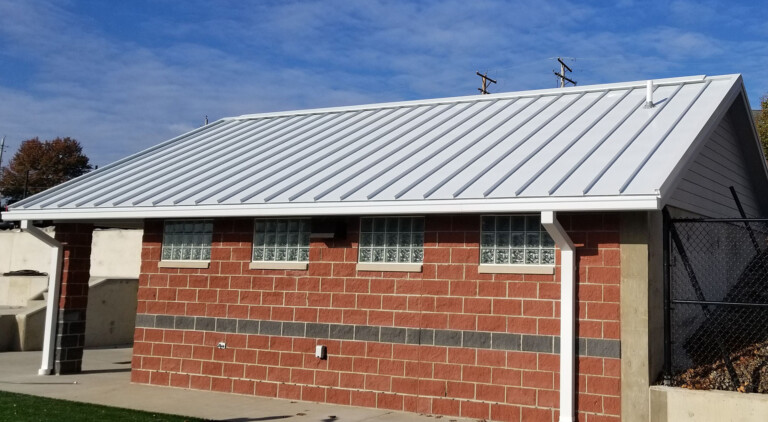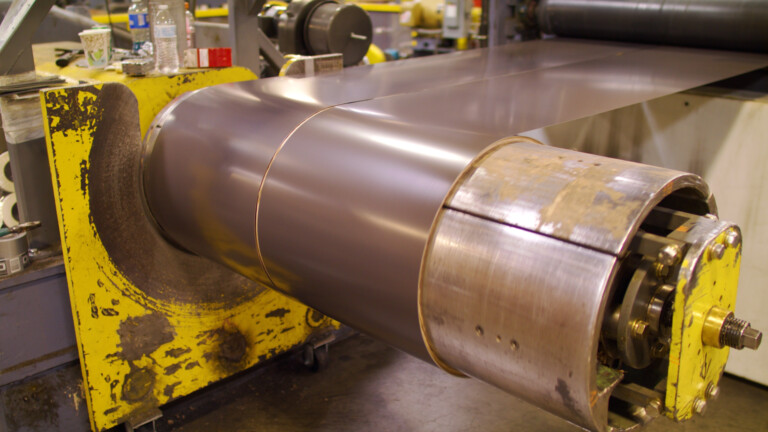Metal Roofing vs. Shingle Roofing: Which Material Should You Choose?
Metal roofing and shingle roofing are both viable options to choose for your next roofing project, but there are distinct benefits, drawbacks, and differences to know of before you buy.
If you’re in the market for a new roof, you might be questioning the type of roof that will work best for you and your home or building. And while it’s great to have so many options, such as asphalt shingles, metal, wood, tile, or concrete, it can also be overwhelming to weigh all the advantages and disadvantages of each type of roofing material.
Luckily, there’s not just one answer for every building, which gives you the freedom to discover the available options, ask questions, and finally make a choice based on factual research.
Here at Sheffield Metals, we think it’s important to give an honest comparison of everything you need to know about metal roofing systems and asphalt shingle roofing so the decision is easier for you. In this article, expect to learn about:
- The advantages and disadvantages of metal roofing
- The advantages and disadvantages of asphalt shingles
- Important considerations to keep in mind before you choose
Metal Roofing: Advantages, Disadvantages, & Characteristics
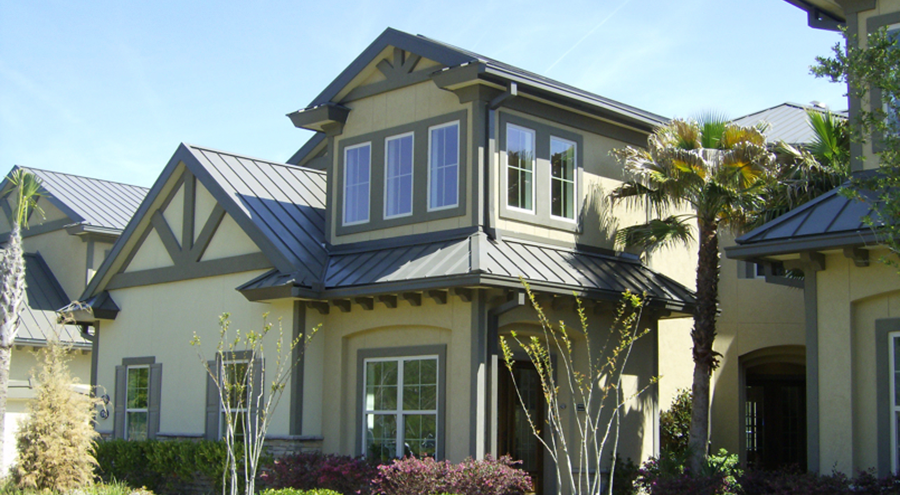
When it comes to metal or shingle roofing, metal roofing is the more complex option requiring specific techniques, experienced installers, and more pieces/parts to make it succeed. That being said, metal roofing is actually more common than you may think or notice, especially if you live in an environment with extreme weather conditions. In addition to lasting decades longer than asphalt shingles, metal roofing offers the versatility and variety of options that most other roofing materials lack. Let’s dive deeper into the benefits and drawbacks associated with this roofing material.
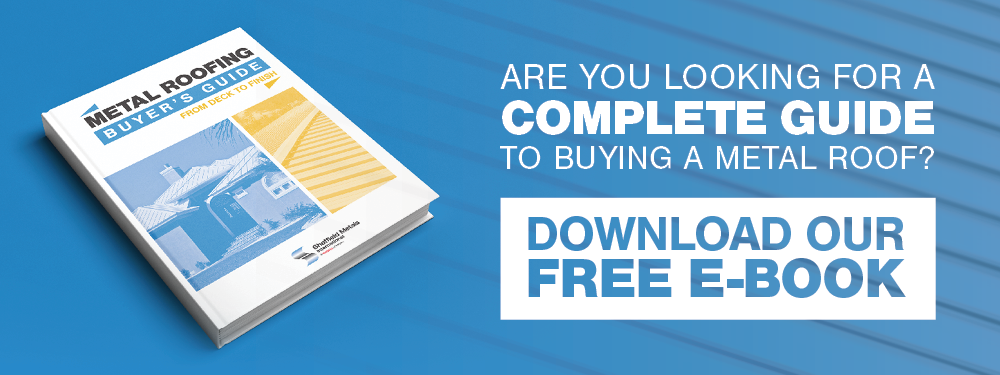
Advantages of Metal Roofing
Lightweight – A major benefit of metal roofing is that it’s a very lightweight material. First, it’s easier for the installers to handle and transport up on the roof during the rollforming and installation process. Second, it doesn’t weigh down and put unnecessary stress on a structure, which reduces frame damage and preserves the integrity of a building.
Longevity – Perhaps one of the biggest differences between metal roofing and shingles is the length of its life. For metal roofing, it’s expected that metal roofing should last at least 50+ years until signs of degradation begin to show. Different metal materials, such as copper and zinc, have even been known to last 100 or more years in some instances.
Lower Long-Term Cost – As we will discuss later, metal roofing is more expensive as a one-time cost. That being said, metal roofing is typically less expensive in the long-term because one metal roof (one lasts 60+ years) can easily outlast at least three asphalt shingle roofs (one lasts 15-20 years).
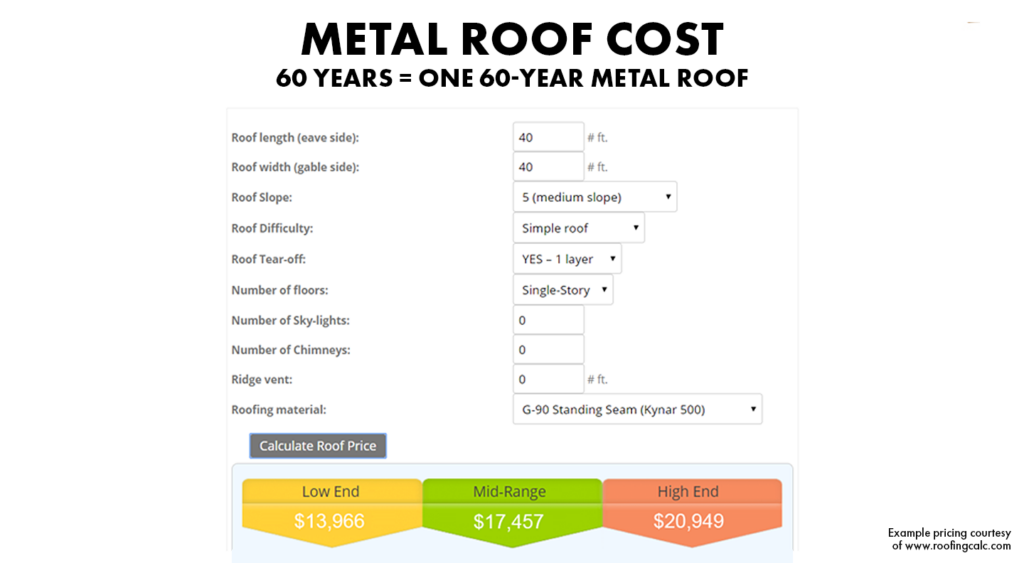
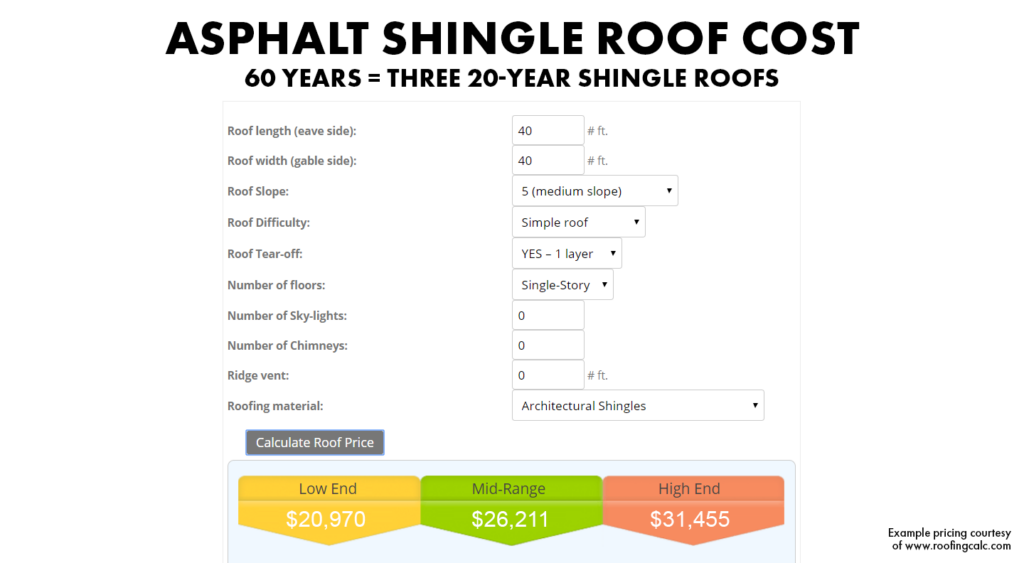
These two photos represent a 60-year cost comparison between mid-range shingle roofing (three in total) and metal roofing (one in total). In this scenario, the mid-range cost for one architectural shingle roof is around $8,700+ and the cost for one 24-gauge steel standing seam roof with a PVDF paint system is about $17,400+. Even if the shingle roof lasted 20 years, you would need to pay for a shingle roof about three times and a metal roof about one time in a 60-year span, making the metal roof a more economical choice.
- Metal roof = $17,457 x 1 (one 60-year lifespan) = $17,457
- Shingle roof = $8,737 x 3 (three 20-year lifespans) = $26,211
Fire Resistance – Metal roofing is typically Class A fire-rated and non-combustible, making it the most resistant to catching fire. This is especially important in areas prone to wildfires because if hot ashes or embers fall on a metal roof, it’s much less likely to catch on fire than shingle roofing.
Weathering Performance – When compared to different materials such as wood, concrete, metal, plastic, or glass, metal easily stands out as the strongest and most durable in regular and extreme weather conditions. When properly installed, metal roofing is designed to withstand:
- Strong winds
- Driving rain
- Snow
- Hail and ice
- Extreme cold
- High heat
Environmentally Friendly – There’s no doubt that metal roofing is the more eco-friendly option to roofing, which applies in a number of ways:
- Metal roofing is highly recyclable, meaning leftover pieces, tear-off panels, or damaged parts can be recycled for future use.
- There are metal coils and sheets that are made up of previously recycled materials. This is especially true with aluminum, as nearly 95% of aluminum roofing is already recycled materials.
- If the underlayment, which is laid above the roof deck and underneath the metal panels to protect against moisture, ice, vapors, and high temperature, is 100% polypropylene, it can be recycled.
Energy Efficiency – In addition to metal roofing’s environmental benefits, it also has energy efficiency advantages. Many metal coil and sheet manufacturers now offer cool roofing, which are highly emissive metal panels that release absorbed heat in higher temperatures and retain heat in cooler temperatures. Additionally, you have the ability to easily mount energy-saving equipment, such as solar panels, on a metal roof using non-penetrating clamps.
Increased Property Value – Since metal roofing lasts longer and has a higher one-time cost in the short run, a building with a metal roof has a higher property value (typically 1-6% higher). This can also contribute to how easy it is to resell a structure, especially if the roof is in good condition and wouldn’t need to be replaced by the new owners. This can come in handy if you plan to put your home or building on the market.
Low Maintenance – The level of upkeep needed to maintain a metal roof is generally minimal, especially if the roof was correctly installed. The manufacturer’s maintenance guide will provide instructions on how to care for your new roof. However, general upkeep usually includes looking for leaves, branches, and other debris that could get stuck on the roof and in the gutters around once or twice per year (and after strong storms). In the event that dirt or other stains do not come off with rain, there are ways to clean your metal roof too.
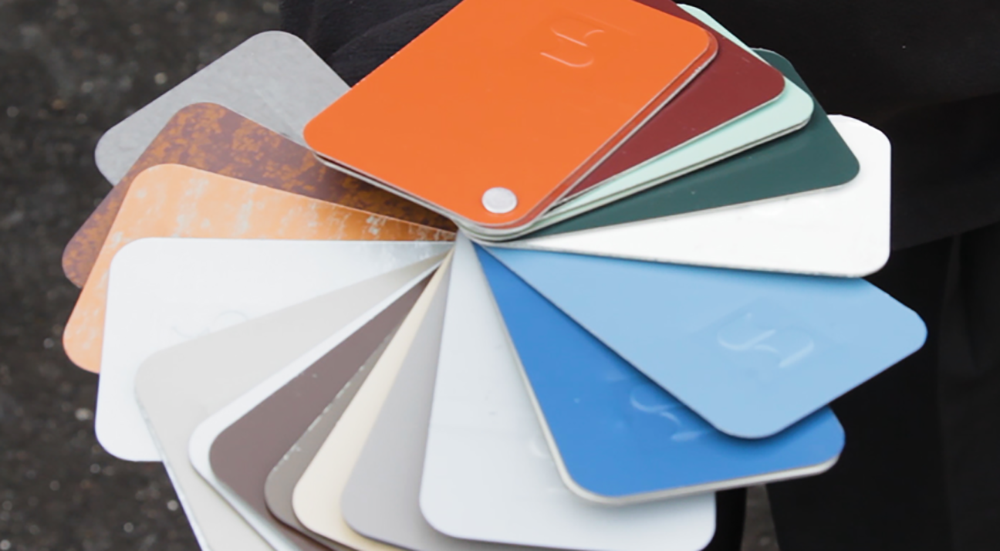
More Color Availability – One of the biggest selling points for metal roofing is that it can come in virtually any color, including bright/vivid colors and earth tones. Metal coil manufacturers partner with reputable paint companies, such as Sherwin-Williams, that develop paint systems specifically designed for metal panels. In addition to the variety of color options, these paint systems are thoroughly tested in a real outdoor environment to ensure they can last decades, which is why trusted metal roofs are backed by paint warranties.
Roofing Over or Retrofitting Over Old Roof – For a cost-effective solution, roofing over or retrofitting a metal roof over your existing roof is one way to save. Opting to install a metal roof over the one that is already on a structure eliminates tear-off costs and reduces the amount of waste potentially ending up in a landfill.
Insurance Benefits – In some situations, a metal roof could lower home insurance premiums because metal is much less likely to fail from fire, damage, etc. than other types of roofing. That being said, there are a lot of other factors that play into the cost of insurance, such as location and other problem-causing risks.
Variety of Looks – Metal roofs come in many shapes and sizes, ranging from panel systems such as standing seam metal roofing systems, to exposed fastener systems. These systems have long been the choice for a high-performance metal roofing system. Metal is also available in a variety of other looks that mimic shingle and tile systems.
Disadvantages of Metal Roofing
Higher One-Time Cost – It’s true, metal roofing is more expensive than shingle roofing as a one-time cost. In addition to the higher cost of materials, there also could be a higher price point for labor and the equipment needed to complete the job; however, it’s dependent on the installation company.
Limited Qualified Contractors – Finding a qualified and experienced metal roofing contractor or installer will make or break an installation, especially since nearly all potential problems with metal roofing stem from some kind of installer error. When compared to shingle roofing installers, there are significantly fewer installers who are equipped and skilled at installing metal roofing.
More Labor Intensive – Metal roofing is a precision installation that is much less forgiving than a shingle roof installation. There is virtually zero room to make errors, which is why metal roofing must be installed by a trained craftsperson. This typically means it’s a little more of a labor-intensive process that could take up more time.
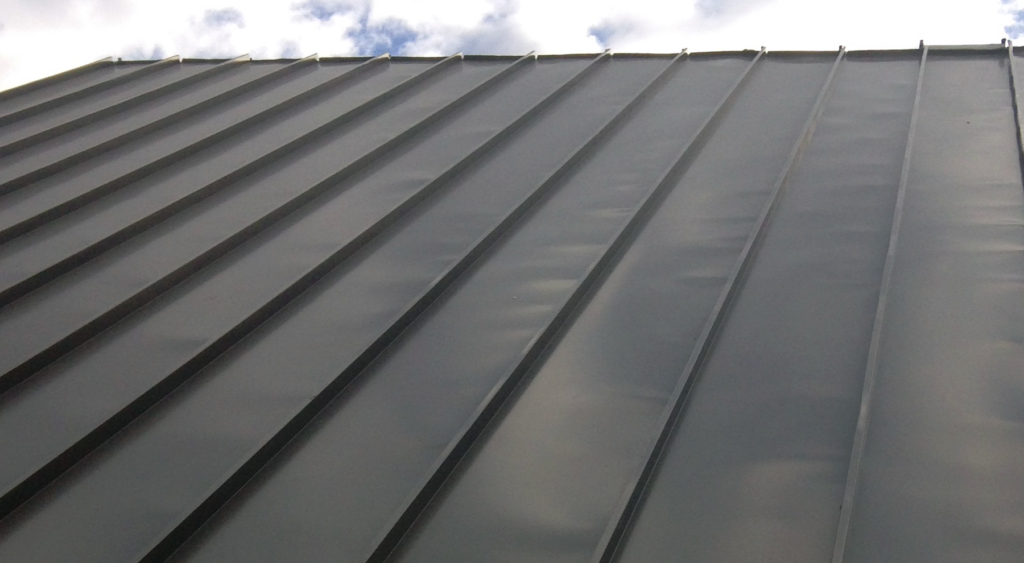
Oil Canning – One of the biggest disadvantages to metal roofing is oil canning, the visible waviness in the flat areas of metal roofing and wall panels. Oil canning is aesthetic and does not impact the performance of the roof as long as it was installed appropriately. Unfortunately, oil canning is an inherent characteristic of nearly all metal roof or wall installations, thus it is not normally a cause for rejection of a system. However, there are ways to reduce the chance of oil canning.
Municipality Issues – There are some communities or Home Owners Associations (HOAs) that do not allow metal roofing to be installed on a new or existing home within its jurisdiction. Common reasons for the ban:
- Metal is often thought of as looking “industrial”
- Inconsistent or goes against the look of a neighborhood
- Can have high-glare issues
Insurance Drawbacks – While metal roofing insurance benefits exist, there is the potential for drawbacks as well. It’s true that some homeowners could get a break on premiums because metal roofing is less likely to damage, but it could also be more expensive because the roof itself is worth more and would make any replacements higher for the insurance company. Also, there are concerns with hail damage loss waivers, which are advertised as a way to save money on insurance. Ask the metal manufacturer for their recommendations before you sign anything with an insurance company. Again, this is very dependent on the specific situation and should be handled on a case-by-case basis.
Shingle Roofing: Advantages, Disadvantages, & Characteristics
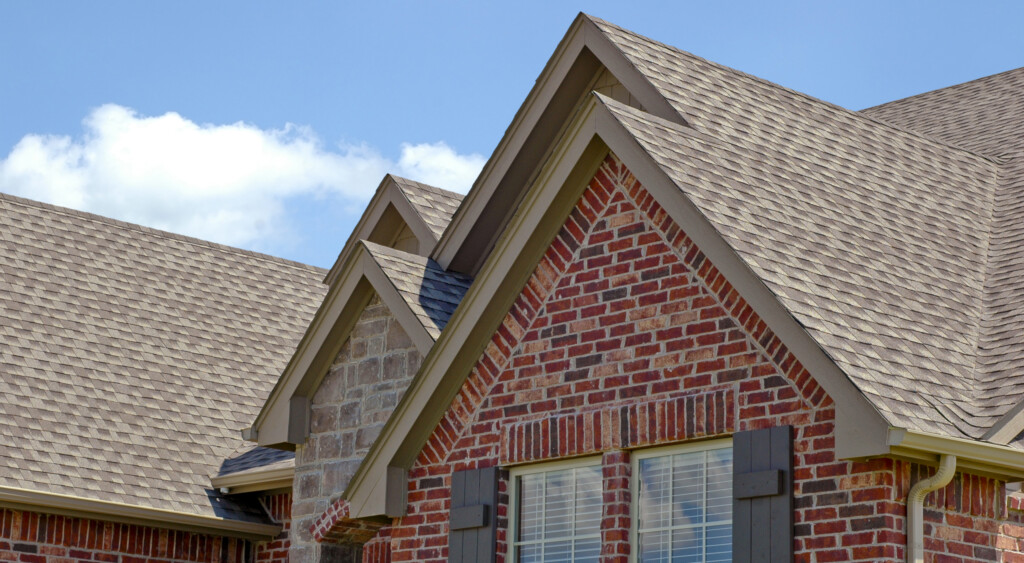
Shingle roofs are everywhere, and there’s no doubt that shingles are more common when compared to metal roofing. Most people automatically think of shingles when they think about roofing because it’s been the traditional choice on many homes and businesses for the last century. There definitely are many benefits to having a shingle roof installed, most of which hinge on its low upfront cost, ease of installation, and access to materials. Let’s get into more of the advantages and disadvantages of a shingle roof.
Advantages of Shingle Roofing
Economical in the Short Term – As mentioned before, shingles are cheaper than metal roofing as a one-time cost (normally less than half the price of a metal roof), which appeals to a lot of homeowners. This fact alone accounts for the vast majority of shingle installs. For reference, please view the cost comparison above.
Easier to Install & Replace – Shingles require less time and labor for both installation and replacement. Shingles come prepackaged and ready to be immediately nailed to the deck (unless cuts are required). With metal roofing, you have to handle finished panels that could be cumbersome, attach the metal panels to the decking using screws instead of a nail gun, connect the panels together, and finally install the flashing (usually consists of multiple metal pieces). All of this requires more time, labor, and skill on the part of the installer.
Less Expensive Repairs – Going along with the ease of installation and replacement, shingles are also much easier and cheaper to fix in the event a failure occurs. Most shingles can be removed one at a time near the source of an issue and require fewer materials to fix. Metal roofing is more complex because the full-length panels are all connected together and more difficult to replace one at a time.
More Installers – Shingles are relatively simple and easy to install, which is why there are more contractors who are able to install shingles than metal roofing. While it’s still important to find a qualified and experienced installer, it’s generally easier for consumers to find contractors who can install a shingle roof.
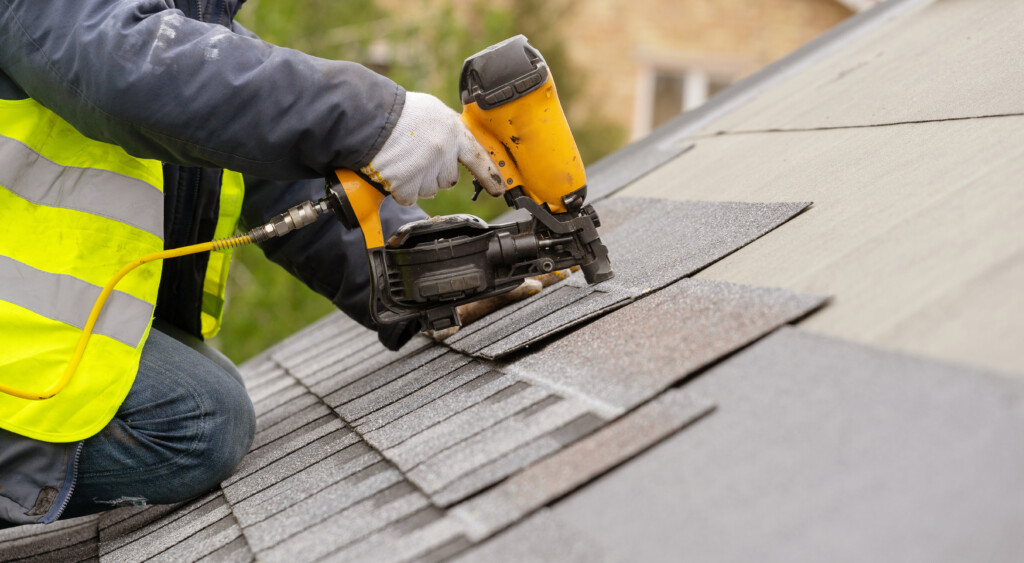
Foot Traffic – The ability to walk on or put weight on shingle roofing is another reason that shingles are easier for the installers. Once they have been secured to the structure, the shingles can be walked on or used as support for the installer while providing greater traction. With metal roofing, you want to minimize how much foot traffic the metal receives, as it could dent, scuff, or buckle under pressure.
Readily Available – Depending on where you live, shingles are commonly sold at local distributors and big box retailers.
Coast-Friendly – Metal roofing and shingles can both be installed in coastal regions, but the warranty on a steel metal roof is usually not offered on a structure within a certain distance from the coast. Most coastal applications require the use of an aluminum system to receive any kind of warranty from the manufacturer. Shingles, specifically asphalt or composite shingles, are heavier and easier to replace in the event they sustain wind damage, which is a good possibility along the coast if your project is in a high-wind zone or prone to hurricanes. That being said, it’s important to know the area in which your project is located and the wind rating needed for your roof system based on that location.
More Warranty Coverage – Shingle roofing can come with a number of warranty offers from both the manufacturer and the contractor. For example, popular problems covered by shingle warranties:
- Manufacturer error
- Material defect
- Algae growth
- Maximum wind-resistance limit (based on the type of shingle)
- Contractor error
Disadvantages of Shingle Roofing
Short Lifecycle – Depending on the shingle material (asphalt or fiberglass), style (3-tab or architectural), and coating you purchase, most shingle roofs last an absolute maximum of 25 years. Replacements, both tear-off and second-layer shingle additions, are very common with shingles.
Higher Long-Term Cost – Shingle roofing is cheaper as a one-time cost, but it typically ends up costing more in the long-run when compared to metal roofing. As described earlier, one metal roof would outlast at least three shingle roofs, and those three shingle roofs would end up costing $9,000 more than the one metal roof.
Intrusive Install – Shingles are attached to the roof with nails that go through the surface of the shingle and into the roof deck underneath. This is a very intrusive process of creating holes in the material that could very easily compromise the structure if improperly installed.
Heavier – Though there have been advances in recent years to reduce the weight of shingles by using less of the base material, asphalt shingles are still heavier than metal panels. The additional weight can be stressful to the structure of the building and could cause problems over time.
Color Limitations – If you’ve ever looked at a shingle roof, you’ll notice that more often than not, they are very dark, dull colors. There’s little opportunity for bright, vivid, or light-colored paints like those used on metal roofing because a shingle’s base material is saturated with asphalt and then granules made of a dark granite material are added for color, UV protection, and fire resistance. It’s harder for these granules to keep a lighter color, which is why shingle roofs are darker by nature.
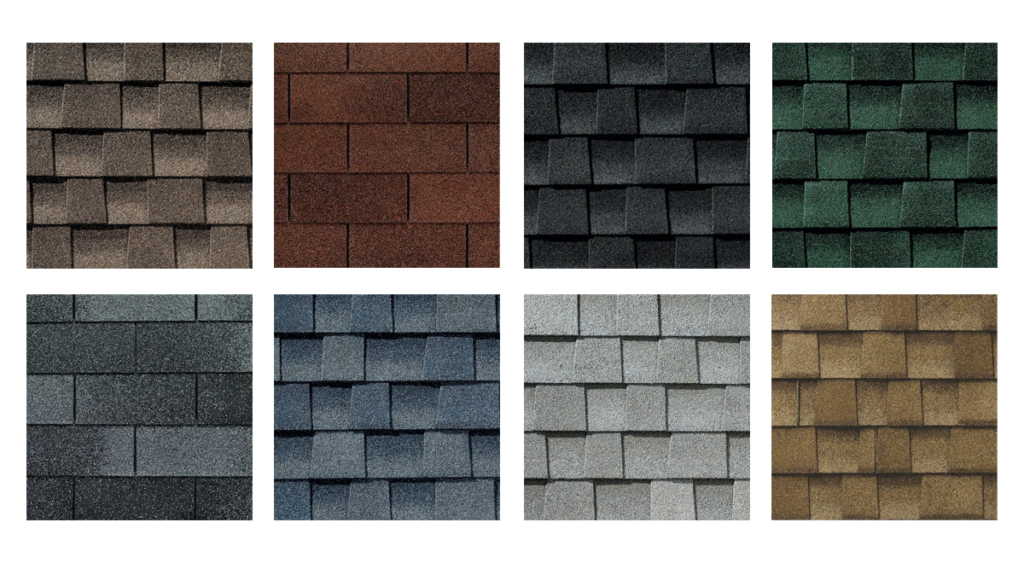
Fire Concerns – Shingles made today are typically Class A fire-rated but contain asphalt, a combustible material, which is a semi-solid form of petroleum. The granules added over the asphalt coating help bring the shingles to a Class A fire rating by making it fire-resistant on the surface, but if a flame or fire reaches the asphalt coating, it is more likely to combust and catch on fire.
Low Recyclability – Believe it or not, asphalt shingles can actually be properly recycled. Despite this fact, 11 million tons of asphalt shingles still end up in landfills every year in the U.S. The problem is that many contractors and consumers are unaware of the fact that shingles can be responsibly disposed of.
Damages Easier – Shingles, especially 3-tab shingles, are damaged far easier than metal roofing, especially during extreme weather conditions such as wind, hail, and snow. Also, if an adhesive is not applied correctly or becomes damaged, the shingles can lift or even rip off one at a time. This is why architectural shingles that provide numerous layers of protection are becoming more popular.
Holds Heat – Heat rays from the sun are drawn to asphalt shingles because the dark colors absorb the warmth. This heat is held on to by the shingles and can be transferred as solar heat into the home or building. This can cause air conditioners and other cooling devices to work overtime to balance the indoor temperature, which could increase energy costs. Additionally, asphalt shingles can get damaged quicker if exposed to high heat for long periods of time.
Flaking Granules – The granules added for shingle color and protection can actually flake off of the coating and get stuck in gutters, pipes, and other places where it could create a blockage problem.
Mildew, Mold, & Algae – Have you ever walked or driven by a building that had some unsightly green or dark coating on a part of the roof? You’ve seen one of the most common problems with shingle roofing. If there is excess moisture that is unable to dry because it lacks access to the sun, it could grow mold, mildew, or algae.
Oil-Based Product – The primary ingredient of asphalt shingles is oil (petroleum), and as a by-product, the cost for shingles can swing dramatically as the cost per barrel of crude oil changes. Not only this, but oil-based products are generally non-recyclable and are manufactured from non-renewable resources.
What to Consider Before You Choose a Metal or Shingle Roof
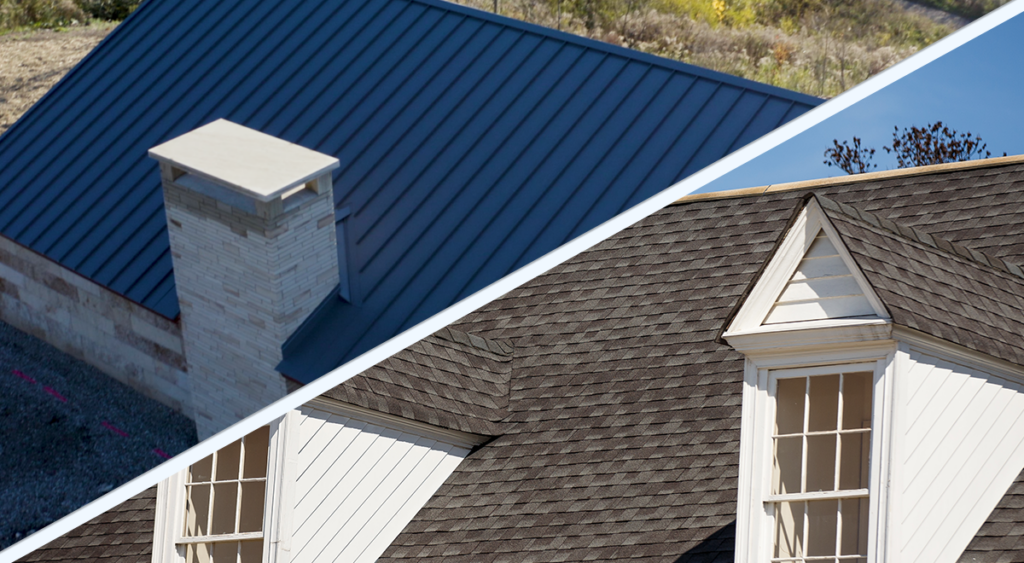
Your roof not only protects your home and the items on the inside, but it also keeps you and your loved ones safe, which is why choosing the right roof based on your individual needs is vital. Start the decision process by considering the following aspects.
Your Budget
Between metal roofing and shingle roofing, one of the most significant factors to consider is how much money you have to spend and are willing to spend at one time. If you have a smaller budget and don’t mind the idea that you’ll have to replace the roof in 15-20 years, a shingle roof is your better option. Or, if you have more money to put down at one time or want the peace of mind that your roof won’t need to be replaced for at least 60 years, a metal roof is the best choice.
Keep in mind that you could be spending thousands of dollars more with shingle roof replacements.
Your Roof Design
Every roof is different, which could really make a difference when choosing the best material for your roof. Get to know your roof by finding out:
- Roof pitch (slope)
- It’s imperative to check the manufacturer’s minimum and maximum slope requirements for both metal and shingle roofing before installation, as it could be restricted based on different products or materials.
- Square footage of the roof
- Complexity of the roof design
- Includes the number of dormers, valleys, hips, skylights, penetrations, flashing points, and vent pipes.
- Areas of the roof in the shade and in the sunlight
Your Property’s Lifecycle
Knowing the predicted lifecycle and use of the building or home the roof will be going on is just as important as knowing your roof design. For example, is the building or home older and in need of extreme renovations or tear-down within the next 20 years? Go with a shingle roof. Or is the building or home newer and likely to last five decades or longer? Go with a metal roof.
Your Environment
There are several environments where a metal roof or a shingle roof is the better choice. For example, if you live anywhere with the threat of high winds or extreme heat or cold, metal roofing can help alleviate some of those concerns. Or if you live in a very mild environment where you are less concerned with extreme weather, a shingle roof will work just fine too.
Your HOA or Municipality
As mentioned before, there are HOAs and certain communities that do not allow metal roofing because it may or may not go against the consistency of the neighborhood. Make sure you check with the specific organization before you buy.
Qualified Contractor Availability
Both metal and shingle roofs require a qualified contractor who can perform the installation according to industry standards and recommended manufacturer details. Metal roofing tends to be more complex because it uses special techniques and equipment, such as rollforming equipment, which requires a more skilled installer than a shingle installation. Just keep that in mind when you make the decision and start to look for contractors.
Final Thoughts on Metal Roofing vs. Shingle Roofing
So, when it comes to metal vs. shingle roofing, which should you choose?
Truthfully, both are great options — it just depends on your individual needs.
Ask yourself these questions as a good starting point:
- How much money am I comfortable spending on a roof?
- How important to me is using recycled or recyclable materials?
- Do I live in an environment that could face severe weather events?
- How much searching for roofing contractors am I willing to do?
- Do I want a bright, vibrant color? Or more of a gray tone?
- Does my HOA restrict different roofing types?
At Sheffield Metals, we sell the sheets and coils used to make metal roofing panels. At the same time, we also care about helping you choose the right roofing product for you and your specific needs.
To learn more or to ask questions about selecting a roof type, contact us today to talk with one of our experienced roofing specialists.
